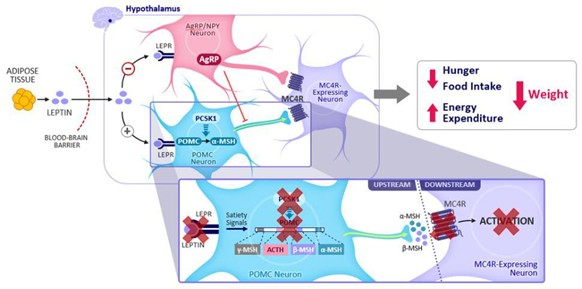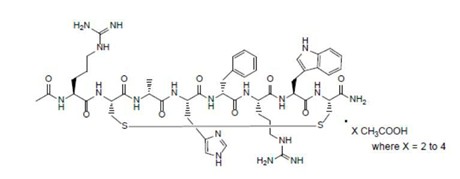reduced productivity among remaining employees. If our management is unable to effectively manage our expected development and expansion, our expenses may increase more than expected, our ability to generate or increase our revenue could be reduced and we may not be able to implement our business strategy.
The physical expansion of our operations may lead to significant costs and may divert financial resources from other projects, such as the development of setmelanotide. Many of our suppliers and collaborative and clinical trial relationships are located outside the United States, and we may in the future seek to hire employees located outside of the United States. Accordingly, our business may become subject to economic, political, regulatory and other risks associated with international operations, such as compliance with tax, employment, immigration and labor laws for employees living or traveling abroad, workforce uncertainty in countries where labor unrest is more common than in the United States, as well as difficulties associated with staffing and managing international operations, including differing labor relations. Any of these factors could materially affect our business, financial condition and results of operations. Our future financial performance and our ability to commercialize setmelanotide, if approved, and compete effectively will depend, in part, on our ability to effectively manage the future development and expansion of our company.
Our information technology systems, or those of our third party CROs, CMOs or other contractors or consultants, may fail or suffer security breaches, which could result in a material disruption of setmelanotide development programs, regulatory investigations, enforcement actions and lawsuits.
In the ordinary course of our business, we collect and store sensitive data, including intellectual property, our proprietary business information and that of our suppliers, as well as personally identifiable information of employees. Similarly, our third-party CROs, CMOs and other contractors and consultants possess certain of our sensitive data. The secure maintenance of this information is material to our operations and business strategy. Despite the implementation of security measures, our information technology systems and those of our third-party CROs, CMOs and other contractors and consultants are vulnerable to attack, damage, or interruption by hacking, cyberattacks, computer viruses and malware (e.g. ransomware), malicious code, phishing attacks and other social engineering schemes, unauthorized access, natural disasters, terrorism, telecommunication and electrical failures, employee theft or misuse, human error, fraud, denial or degradation of service attacks, sophisticated nation-state and nation-state-supported actors or unauthorized access or use by persons inside our organization, or persons with access to systems inside our organization. Any such attack, incident or breach could compromise our information technology systems and the information stored there could be accessed, publicly disclosed, lost, corrupted or stolen. Further, attacks upon information technology systems are increasing in their frequency, levels of persistence, sophistication and intensity, and are being conducted by sophisticated and organized groups and individuals with a wide range of motives and expertise. As a result of the COVID-19 pandemic, we may also face increased cybersecurity risks due to our reliance on internet technology and the number of our employees who are working remotely, which may create additional opportunities for cybercriminals to exploit vulnerabilities. Because the techniques used to obtain unauthorized access to, or to sabotage, systems change frequently and often are not recognized until launched against a target, we may be unable to anticipate these techniques or implement adequate preventative measures. We may also experience security breaches that may remain undetected for an extended period. Even if identified, we may be unable to adequately investigate or remediate incidents or breaches due to attackers increasingly using tools and techniques that are designed to circumvent controls, to avoid detection, and to remove or obfuscate forensic evidence.
The legislative and regulatory landscape for privacy and data protection continues to evolve, and there has been an increasing amount of focus on privacy and data protection issues with the potential to affect our business, including recently enacted laws in a majority of states requiring security breach notification, some also require implementation of reasonable security measures and provide a private right of action in the event of a breach. Costs of breach response, mitigation, investigation, remediation, notice and ongoing assessments can be considerable. Thus, any access, disclosure, damage or other loss of information, including our data being breached at our partners or third-party providers, could result in legal claims or proceedings and liability under state, federal and international privacy laws, disruption of our operations, and damage to our reputation, which could adversely affect our business.
We and certain of our service providers have been and from time to time will continue to be subject to cyberattacks and security incidents. While we do not believe that we have experienced any significant system failure, accident or security breach to date, if such an event were to occur and cause interruptions in our operations, it could result in a material disruption of our programs. For example, the loss of clinical trial data for setmelanotide or other product candidates could


